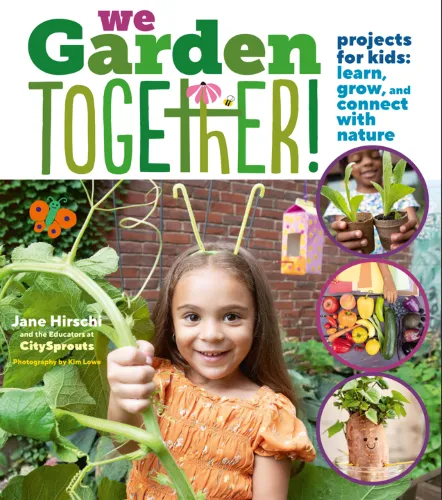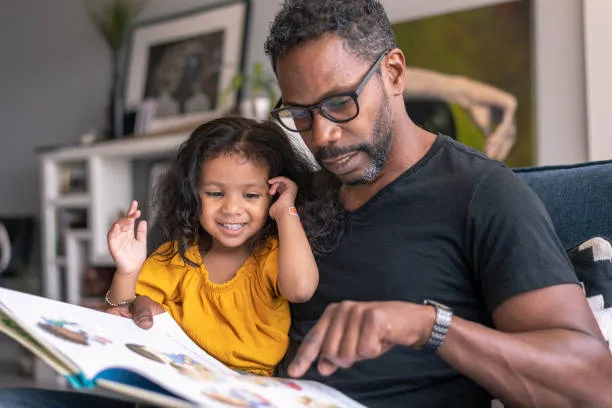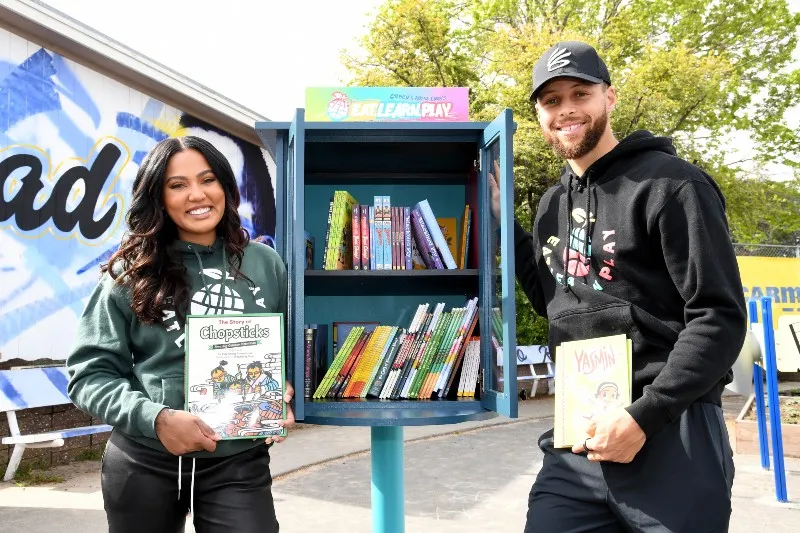Summer is our favorite time of year. Slowing down, enjoying the outdoors, and relaxing with family. We also can make more time to read with the young children in our families and communities.
This blog is about reading with preschoolers. Reading together brings us closer in the moment and can spark new interests, build confidence and creativity, and have a lasting impact on career interests. For STEM Next Opportunity Fund, connecting STEM and literacy plays a role in accomplishing its big new moonshot goal of inspiring 20 million more young people with STEM opportunities by 2027.
Here are four ideas to bring more joy to reading, introduce the wonders of STEM, and perhaps guide children on their path to becoming a botanist, astronaut, or inventor. We find great joy reading to our young children. We hope you will too.
1. Reading together
Create a routine to try reading each day. Limit distractions — for your child and yourself. Together, make a cozy spot and designate it as your special reading area. Put away cell phones and other electronics to prevent interruptions, and keep the spot free of toys and games to focus on the reading experience. We find the following resources help make reading especially fun and engaging. Let’s Focus from Ready4K offers 10 simple ideas to maximize the reading experience, like taking a wiggle break or playing listening games to build focus. Why Reading Aloud to Kids Helps Them Thrive by Deborah Farmer Kris offers tips like “Press Pause Button” which has made us mindful to invite a child to share observations and questions before turning the page. We also love the idea of outdoor reading. Read about StoryWalks in 11 Creative Ways to Enjoy Reading This Summer by Kayla Craig. There may be a StoryWalk program in your community, but if not Craig suggests, “Load up your wagon with kids and a favorite book, and plan pitstops around your neighborhood for reading parts of the book. When you get home, you’ll have finished a whole story and stretched your legs, too!”
We love reading to our kids, grandkids, and the extended children in our lives, but find ourselves wondering how the same book gets picked for storytime Every Single Day! Bernice Cullinan and Brod Bagert from Reading Rockets explain, “It is not unusual for children to favor a particular story and … a favorite story may speak to your child’s interests or emotional needs. Be patient. Continue to expose your children to a wealth of books and eventually they will be ready for more stories.” If you do reach your limit (which we all do!), we came up with a game to keep our sanity and get beyond our kids’ playlist. Instead of saying no, we guide them to close their eyes and we pick the next book. We’ve found the game to be a fun, sanity-saving experience while expanding a child’s literary palette.
2. Choosing books to read with your child
Read books whose characters have a wide range of backgrounds and interests so children can see themselves reflected in stories or enter worlds different from theirs. We appreciate that Rudine Sims Bishop describes how books can serve as “mirrors, windows and sliding glass doors” to help build deeper understanding and empathy. Two favorites from the National Inventors Hall of Fame include Abby Invents Unbreakable Crayons by Arlyne Simon, which describes the process of finding a solution to a problem we can relate to and Ada Twist, Scientist by Andrea Beaty, which promotes creativity and perseverance in fun experiments.
Reading Rockets offers a valuable tip for selecting books. “By reading stories that are on their interest level, but beyond their reading level, you can stretch young readers’ understanding and motivate them to improve their skills.” Librarians are a wonderful resource for helping find books that match your child’s interest and age level. Lori Takeuchi and Kiley Sobel of FamLAB offer, “Libraries offer a variety of services designed to help families extend children’s interests, often for free or at very low cost.” What also makes library programs so important is how they help reduce the opportunity gap in STEM. While not every community has a science center, tech museum, or zoo, just about every town has a library that offers books along with access to STEM programs for families.

Photo credit: Excerpted from We Garden Together! © by Jane Hirschi and the Educators at City Sprouts. Used with permission from Storey Publishing. Photography by © Kim Lowe Photography
3. Continuing learning after reading
Follow up your reading routine with hands-on fun. Learning Heroes offers Summer Reading Tips that include following up on books and children’s interests. “Visit museums, cultural centers, and libraries. Listen to podcasts or watch informative videos online. Pick a new activity to try or a neighborhood location to explore.” Leap into Science developed by the Franklin Institute for children ages 3–10 and their families, offers open-ended science activities to accompany children’s books. Wind fascinates the children in our lives, so we like reading Kite Flying by Grace Lin and making wind detectors. We love the idea of creating homemade books from Ekuwah Mends Moses. Families can add photos and drawings and label the images with English and home language. For more wonderful ideas about family engagement we encourage you to read Moses’ post, Consistently “Invisible” Family Engagement.
The children in our families love playing with dirt, mud, and water. We love the ideas for expanding their play with these resources that are presented in We Garden Together! By Jane Hirschi and the Educators at CitySprouts. The 25 garden activities are simple to support and revolve around themes of plant, grow, eat, and discover.
4. Celebrating the funders and innovators that bring books and reading to communities
We would like to close by highlighting leaders who support efforts to ensure that all kids and their families have access to books. Half of homes across the United States have fewer than 100 books. Ensuring broader access to books can support children’s early literacy and school success. We salute funders that are increasing access with innovative approaches to family engagement and reading.
Reach Out and Read partners with pediatric healthcare so that families can learn about the importance of reading during pediatric visits, receive books, and learn how to make reading aloud a daily routine. The Clinton Foundation’s Too Small to Fail supports new ways to transform everyday places, which include laundromats, playgrounds, and pediatric clinics into language-rich spaces for children and families. Stephen and Ayesha Curry encourage a love of reading with their Eat. Learn. Play. Foundation, which is helping build, install, and steward “Little Town Library” book-sharing boxes in Oakland. Dolly Parton’s Imagination Library mails a book a month to children under five, and boy do our kids love checking the mail to see if something is there for them!
Linda Kekelis – As a parent and now as a grandparent I love reading and discovering the wonders of STEM through books. I love, love, love the Rockridge Library (part of the Oakland public library system) where I make weekly visits to search the shelves for old favorites that I read decades ago to my son and discover new favorites to share with the next generation of readers in my family.
Andria Parrott – As a parent of two VERY active boys 5 and under, I LOVE when we snuggle in for our daily reading routine. Whether it’s the excitement of reading the same book AGAIN, or discovering something new on a recent library trip, those moments to slow down and dive into a story generate wonder and excitement I hope they can explore in the years to come.
STEM Next Opportunity Fund works toward dismantling the opportunity gap in STEM so that all youth can thrive and explore their potential. The Family Engagement Project helps support this mission. STEM NEXT supports family engagement by supporting networks of organizations that offer STEM programs in out-of-school time. With case studies, research-to-practice blogs, and white papers STEM Next highlights promising practices and research.



